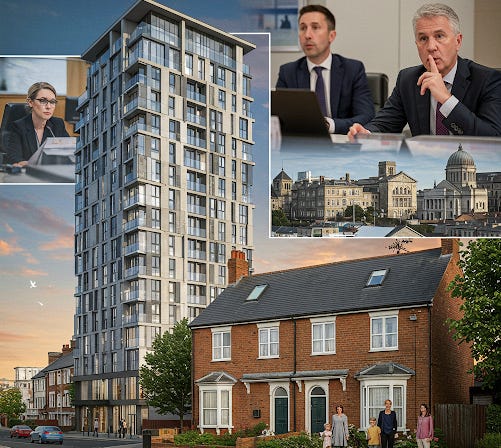#Bristol's Great Divide: Luxury for the Few, Neglect for the Many.
High Demand for Housing in Bristol as Waiting List Exceeds 22,000.
Bristol continues to face significant pressures on its social housing supply, as evidenced by the latest figures from Bristol City Council. Currently, over 22,000 are actively bidding for social housing homes through HomeChoice Bristol, the council's housing register. This substantial number highlights the considerable demand for affordable housing within the city and the challenges faced by many residents in securing a suitable place to live.
The sheer volume of applicants means that even those with significant housing needs often experience lengthy waiting times, sometimes spanning several years, before receiving an offer of accommodation. The council operates a banding system to prioritise applications based on the level of housing need, with Band 1 representing the highest priority. However, the limited availability of social housing means that many applicants, particularly those in lower bands, may face a considerable wait or may need to explore alternative housing options.
Meanwhile, conversely, Bristol is fast becoming a city carved in two, a stark illustration of how unchecked development, seemingly lauded by those in power, is exacerbating inequality and pushing ordinary working people to the fringes. The recent unveiling of the Stafford Yard "build-to-rent" scheme in Bedminster Green, where two-bedroom flats command rents starting at an eye-watering £1,960 per month, serves as a brutal testament to this growing chasm. While developers and some councillors trumpet these projects as solutions to the housing crisis, the reality on the ground paints a far more sinister picture: a city prioritising the wallets of the wealthy over the fundamental needs of its own residents.
These build-to-rent behemoths, like Stafford Yard and the even larger developments planned near Temple Meads and the former Debenhams site, are not designed for the average Bristolian. With stringent income requirements and rents that dwarf local wages, they cater to a select few, likely those relocating from more affluent areas or backed by corporate entities. The inclusion of token affordable housing units – a mere 21 out of 295 in Stafford Yard, and even fewer at truly social rent levels – feels like a cynical afterthought, a fig leaf to mask the fundamental purpose of these ventures: to extract maximum profit from a captive rental market. The amenities offered – chef's kitchens, co-working spaces, and residents' lounges – are luxuries far removed from the daily struggles of those languishing on the council's ever-growing housing waiting list, a list that now exceeds 22,000.
The trajectory is alarming. Bristol is hurtling towards a future where the city centre and its surrounding areas become the exclusive domain of private landlord conglomerates. These entities, driven by profit motives rather than community well-being, are effectively colonising prime real estate, creating enclaves of unaffordable luxury. Meanwhile, local people, the very backbone of this city, are being priced out, forced to compete for scraps in the suburbs or face the grim prospect of leaving altogether. The vision being sold is one where those from less affluent neighbourhoods become mere visitors to their own city centre. This isn't regeneration; it's a hostile takeover, and Bristol's soul is being sold off piece by expensive piece.



